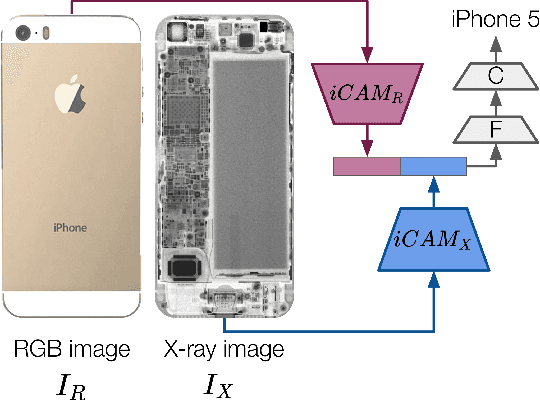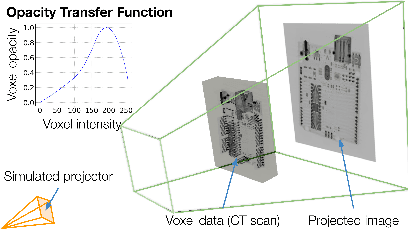FNU Abhimanyu
Unsupervised Deformable Ultrasound Image Registration and Its Application for Vessel Segmentation
Jun 23, 2023Abstract:This paper presents a deep-learning model for deformable registration of ultrasound images at online rates, which we call U-RAFT. As its name suggests, U-RAFT is based on RAFT, a convolutional neural network for estimating optical flow. U-RAFT, however, can be trained in an unsupervised manner and can generate synthetic images for training vessel segmentation models. We propose and compare the registration quality of different loss functions for training U-RAFT. We also show how our approach, together with a robot performing force-controlled scans, can be used to generate synthetic deformed images to significantly expand the size of a femoral vessel segmentation training dataset without the need for additional manual labeling. We validate our approach on both a silicone human tissue phantom as well as on in-vivo porcine images. We show that U-RAFT generates synthetic ultrasound images with 98% and 81% structural similarity index measure (SSIM) to the real ultrasound images for the phantom and porcine datasets, respectively. We also demonstrate that synthetic deformed images from U-RAFT can be used as a data augmentation technique for vessel segmentation models to improve intersection-over-union (IoU) segmentation performance
Unsupervised Deformable Image Registration for Respiratory Motion Compensation in Ultrasound Images
Jun 23, 2023Abstract:In this paper, we present a novel deep-learning model for deformable registration of ultrasound images and an unsupervised approach to training this model. Our network employs recurrent all-pairs field transforms (RAFT) and a spatial transformer network (STN) to generate displacement fields at online rates (apprx. 30 Hz) and accurately track pixel movement. We call our approach unsupervised recurrent all-pairs field transforms (U-RAFT). In this work, we use U-RAFT to track pixels in a sequence of ultrasound images to cancel out respiratory motion in lung ultrasound images. We demonstrate our method on in-vivo porcine lung videos. We show a reduction of 76% in average pixel movement in the porcine dataset using respiratory motion compensation strategy. We believe U-RAFT is a promising tool for compensating different kinds of motions like respiration and heartbeat in ultrasound images of deformable tissue.
RGB-X Classification for Electronics Sorting
Sep 08, 2022



Abstract:Effectively disassembling and recovering materials from waste electrical and electronic equipment (WEEE) is a critical step in moving global supply chains from carbon-intensive, mined materials to recycled and renewable ones. Conventional recycling processes rely on shredding and sorting waste streams, but for WEEE, which is comprised of numerous dissimilar materials, we explore targeted disassembly of numerous objects for improved material recovery. Many WEEE objects share many key features and therefore can look quite similar, but their material composition and internal component layout can vary, and thus it is critical to have an accurate classifier for subsequent disassembly steps for accurate material separation and recovery. This work introduces RGB-X, a multi-modal image classification approach, that utilizes key features from external RGB images with those generated from X-ray images to accurately classify electronic objects. More specifically, this work develops Iterative Class Activation Mapping (iCAM), a novel network architecture that explicitly focuses on the finer-details in the multi-modal feature maps that are needed for accurate electronic object classification. In order to train a classifier, electronic objects lack large and well annotated X-ray datasets due to expense and need of expert guidance. To overcome this issue, we present a novel way of creating a synthetic dataset using domain randomization applied to the X-ray domain. The combined RGB-X approach gives us an accuracy of 98.6% on 10 generations of modern smartphones, which is greater than their individual accuracies of 89.1% (RGB) and 97.9% (X-ray) independently. We provide experimental results3 to corroborate our results.
 Add to Chrome
Add to Chrome Add to Firefox
Add to Firefox Add to Edge
Add to Edge